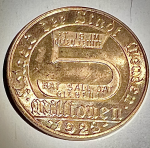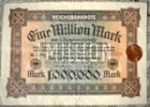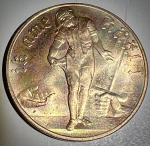Weimar Republic
The Weimar Republic phenomenon existed in Germany, from 1918 to 1933 and is an example of a Constitutional Federal Republic. Named after the city of Weimar, where the gathering took place, that instituted it.
Reception
From the point of view of many millions of Germans, including later adherents to National Socialism, it was a time of great national dis-unity and stress.
Germany's defeat in 1918, and the humiliating conclusion of the Versailles Treaty, enraged the German people. It was widely seen as a massive injustice. The period was characterized by the abdication of Kaiser Wilhelm II, a failed Communist Insurrection (put down by returning German Soldiers), shortages, famine, hyperinflation, and a slide into debauchery and immorality. The emergence of opposing paramilitary forces inevitably led to violence and murder. Whatever progress was slowly made during the Roaring Twenties, in terms of stability and employment, was negated by the Great Depression of 1929.
A new beginning
President Paul von Hindenburg appointed Adolf Hitler as Chancellor on the 30th of January 1933. This event is often thought of as the end of the Weimar Republic. However, Hitler's party at that stage only held two out of ten cabinet positions. It was not until the Reichstag Fire, and the subsequent emergency powers, culminating in the Enabling Act of 1933, that Hitler had, effectively, been given the tools to take control. It should be noted at this point, that Hitler was NOT a dictator, as is commonly claimed, as the Reichstag still had veto power over his proposals and used it on a number of occasions.



